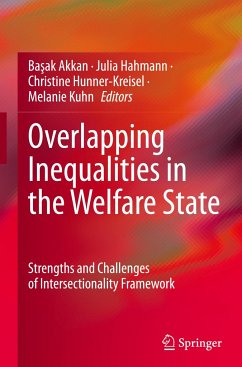
Health Inequalities in European Welfare States
Evidence from the European Social Survey
Versandkostenfrei!
Versandfertig in 6-10 Tagen
39,99 €
inkl. MwSt.

PAYBACK Punkte
20 °P sammeln!
Social inequalities in health are substantial throughout Europe. It is widely acknowledged that welfare states are important determinants of health in European countries as they mediate the extent and impact of socio-economic position on health. The concept of welfare state regimes has therefore been used to analyze cross-national differences in population health. The present book adds to this literature with recent data from the European Social Survey, covering up to 80 000 people in 25 countries. It thereby constitutes one of the most extensive comparative studies of health inequalities ever...
Social inequalities in health are substantial
throughout Europe. It is widely acknowledged
that welfare states are important determinants of
health in European countries as they mediate the
extent and impact of socio-economic position on
health. The concept of welfare state regimes has
therefore been used to analyze cross-national
differences in population health. The present book
adds to this literature with recent data from the
European Social Survey, covering up to 80 000 people
in 25 countries. It thereby constitutes one of the
most extensive comparative studies of health
inequalities ever performed. It demonstrates that
the overall level and the magnitude of self-
perceived health inequalities according to people s
educational attainment, occupational status and
income level are not always randomly distributed
between welfare state regimes. One of the key
findings is that although the egalitarian
Scandinavian welfare regime scores well on overall
health, it does not exhibit the smallest
inequalities.
throughout Europe. It is widely acknowledged
that welfare states are important determinants of
health in European countries as they mediate the
extent and impact of socio-economic position on
health. The concept of welfare state regimes has
therefore been used to analyze cross-national
differences in population health. The present book
adds to this literature with recent data from the
European Social Survey, covering up to 80 000 people
in 25 countries. It thereby constitutes one of the
most extensive comparative studies of health
inequalities ever performed. It demonstrates that
the overall level and the magnitude of self-
perceived health inequalities according to people s
educational attainment, occupational status and
income level are not always randomly distributed
between welfare state regimes. One of the key
findings is that although the egalitarian
Scandinavian welfare regime scores well on overall
health, it does not exhibit the smallest
inequalities.












